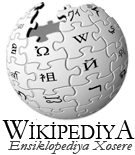| Asmen | |
|---|---|
 | |
| Melumato şexsi | |
| Dewlete |
|
Asmêno Bêwayir (namey xoyo raştıkên Mesut Keskin) yew cıgeyraoğo Zaza u merdumê ilmê zıwananê Hind-Ewropao. Serra 1973ine de Estamol de ame riyê dınya. Keyey xo taê serri raver dewa Mazra Sılêmanu, Pılemoriye (Dêrsım) ra bar kerdo, ameo Estamol. 1975 de piyê ey o be maa cı ra ardi Almanya. Ae ra nat na dıwele de weşiya xo rameno. Almanya de şi mekteb. 1992 de kewt universıte u mıhendısinay makina (vıraştena makina) heta lisanê veri wende.
Oyo ke Zazaki verê coy tenê areze (fam) kerdêne, emma qısey nêkerdêne. 1993 de dest kerd zıwanê ma u piyê xo, gına sero, musa. 1996 de redaksiyonê pêseroka Warey de ca gırewt. Taê gurenayışê xoyê zıwani, nuştey, kılamê xo pêserokan u internet de veciyay (taê ebe namey xoyê keyey, Mesudê Keşki).
Nıka Frankfurtê Maini de diwanê idarey Enstituyê Zazaki de gureyeno u temsilkarê pêseroka Miraziê Ewropao. 2005 ra heta 2008 Universıtey Frankfurtiê Goethey de qısmê ilmê zıwanan de ilmê têverşanaena zıwanan (ilmê qıyasê zıwanan) de lızgey Hindo-Ewropaistiki (Indogermanistik) wend. Paizê 2008ine de teza xoya mastıri dê zerre. Teza xo diyalektanê Zazaki sero nuşte. Çele (Kanuno Peyên) 2009 de wendışê universıtey qedena.
Bêwayiri Şazadeo Qıckek Küçük Prens çarna a Zazaki, serra 2009ine de kıtab de Almanya de veciya.
| 20 Kanun 2024 Êne | Wikipedia de 42,208meqaley estê. |
| Templatê Zıwani | ||
| ||
| ||
| ||
|
| ||
| ||
| ||
|
|
- leqeme - pseudonym : Asmêno Bêwayir
- caê dina-amaişi - place of birth : Estamol /Istanbul
- serra biyaene - date of birth : 1973
- kok - origin: Eastern Anatolia, Dersim (Dêsım), Pılemoriye (Pülümür), Mazra Sılêmanu, aşira Balabanu ra, hetê pi ra Çê Keşki, hetê mae ra Çê Ğeyali
- cao ke maneno - living space: Frankfurt/Germany
- kar u gure - profession: Student of Comparing Linguistics - Indoeuropaistic and metro driver
- zonê ma u piyê mı sero - mother tongue : http://en.wikipedia.org/wiki/Zazaki 'is a language spoken in eastern Anatolia between the rivers Euphrates and Tigris. It belongs to the northwest-Iranian group of the Iranian language branch of the Indo-European language family. The Zazaish language is related to Kurdish, Persian and Balochi. An exact indication of the number of Zazaki speakers is unknown. Internal Zaza sources estimate the total number of Zazaki speakers at 3 to 6 million.'
The Zaza-People originate in Eastern Turkey. Usually, they are referred to as Kurds, because just recently knowledge about them has spread. But this is not correct and heavily opposed by Zazas. The Zazas do not form a homogenous group, for they can be divided by their confession half and half into Alevis and Sunnis. Traditionally the religious identity is more important than having the same language in common. Only recently in the European Diaspora there are attempts for a claim to a Zaza identity irrespective religious ideas.
After the fall of Ottoman Empire the Turks had made bad experience as far as maintaining cultural and linguistic diversity within a nation was concerned. For this reason they started an assimilation politic which should unite all population into an identity based on Turkishness. Hence publishing and music making in local languages became forbidden. Besides the Jews, Armenians and Greeks, no other ethnic minorities officially existed in Turkey according to the Treaty to Lausanne in 1923.
Suffering discrimination from the Turkish Army many Zazas moved to West Europe and especially West Germany. Released from fear of repression, the awareness of the Zazas about their identity linked with their language Zazaki raised. Many Intellectuals have begun to pay more attention to their language and are actively involved in maintenance strategies. They have come to the point to realise the ultimate worth of their language which is about to die. Indeed Zazaki is threatened with extinction, because many children do not learn the language as a mother tongue language and in Turkey many people have voluntarily stopped communicating in Zazaki for mainly economic reasons.
a maxim : "Languages are the chief distinguishing marks of people. No people in fact comes into being until it speaks a language of its own; let the languages perish and the people perish too, or become different people. But that never happens except as the result of oppression and distress."
Zaza literature :
- "Mundart Zaza" (by Peter I. Lerch, 1857/58)
- "Mewlıd" (by Ehmedê Xasi, 1899 and Usman Efendiyo Babıc, 1933)
- "Mundarten der Zaza" (by Karl Hadank ,1932; post-humous works from Oskar Mann)
- "A grammar of Dimili" (by Terry L. Todd, 1985)
- "Rastnustena Zonê Ma" (by C. M. Jacobson, 1993)
- "Zazaca Okuma-Yazma El Kitabý" (by C. M. Jacobson, 1997)
- "Grammatik der Zaza-Sprache" (by Zülfü Selcan, 1998)
- "Zazaki -Grammatik und Versuch einer Dialektologie-" (by Ludwig Paul, 1998)
internet sources :
(copied from Mirzali Zazaoğlu; thanks to him)

